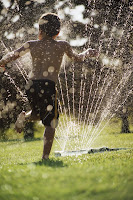 Since the age of ten, I have worked in the green industry; my father since the sixties. When he saw how big I was, he put me behind a roto tiller and away I went. Then for the summer I was off to my Uncle Jim’s to work the sod fields and produce soil mixes up in Waterdown Ontario.
Since the age of ten, I have worked in the green industry; my father since the sixties. When he saw how big I was, he put me behind a roto tiller and away I went. Then for the summer I was off to my Uncle Jim’s to work the sod fields and produce soil mixes up in Waterdown Ontario.
At age fifteen I worked for a large lawn care company doing in excess of 1 million dollars/year in sales back in 1980. That winter my father asked if I wanted to start a lawn care business with him. Thus, Stangl’s Enviro Lawn Care. That was back in 1981. The beginning of Stangl’s Lawn Care and then a name change to the current. Our focus has always been providing the best.
Let’s back up to when I was ten on the sod fields. I was taught then of seasonal changes(I thought it meant my job from year to year.). We started the prep of the fields in the beginning of August and set our sights for August 21. This is usually our seasonal change in this area.
The nights will get longer and days shorter. The night time temps will lower while the day time stays high. Why is this so important? Time to put the grass seed down for the best establishment. Grass seed loves cool nights and warm days. We are also guaranteed a little moisture from Mother Nature to help us along. So, let’s start to look at getting the seed down now.
You can apply the seed two ways. The first is by spreader. If you opt for this, then you’ll need to aerate prior. This will allow the seed to flush into the holes and germinate out of harm’s way. The core will also break down and act as top dressing. The second and most effective is power slit seeding. This is done by a machine done in two directions (diamond effect) to encourage the best fill in.
With both, you should think of a top dressing material to apply. I use a pelletized composted material that can be applied by spreader. Bulk soil is out for me. I am guaranteed consistency, without the wood chips, rocks or even glass found in some of the bulk soils I have purchased.
By applying the organic top dressing material, you’ll not only get the needed nutrients, but your soil’s ability to hold moisture will go up by 50%. (Results vary due to materials)
So, let’s take advantage of the seasonal change and get your seed on to rejuvenate your lawn’s performance and look.










